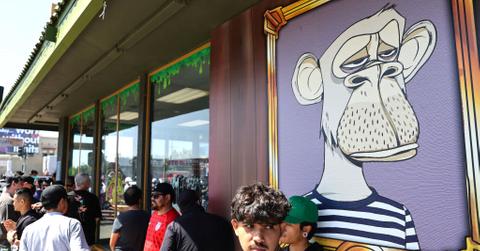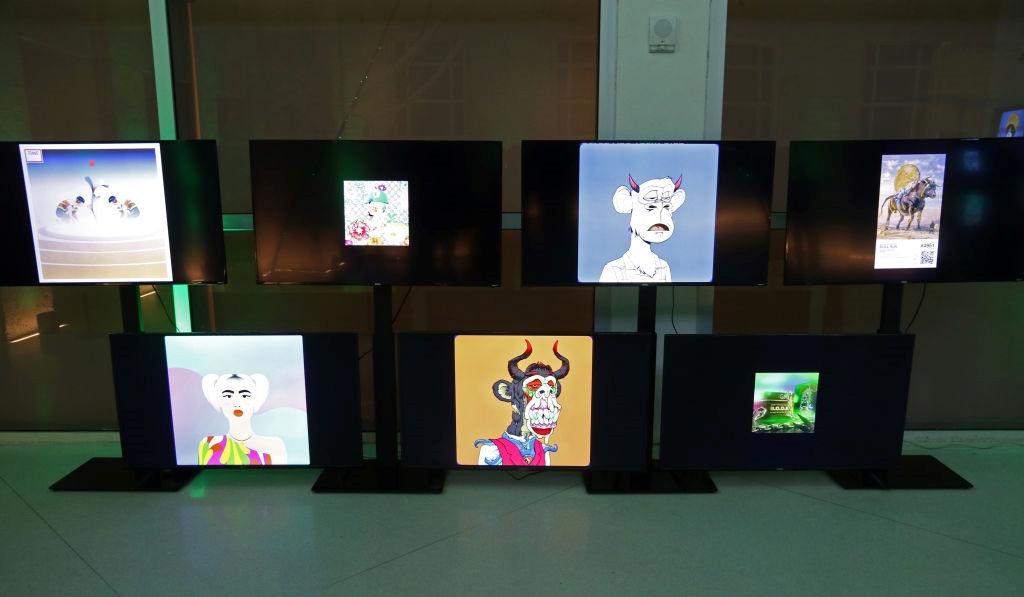NFT Sales Are Down in 2022 — Will They Recover?
NFT sales are down from last year’s peak. Is the boom over or will the NFT windfall continue? So far, the slump has dampened the excitement.
May 4 2022, Published 11:24 a.m. ET
Hardly anyone was immune from talk of the NFT explosion in recent years. Peaking in September 2021 at about 225,000 daily sales, NFTs changed the course of the digital economy in two shakes of a bored ape’s tail.
However, those sales are dropping in 2022, and investors are speculating about the future. NFT sales could flop or recover. Which is the likeliest outcome?
NFT sales have faltered in recent months.
According to a report from NFT data platform NonFungible, daily average NFT sales have plunged to 19,000 as of late April. This is less than a tenth of sales from about eight months ago when NFTs were at their peak.
It isn't just sales that are down. To buy and hold NFTs, you need an active wallet. The current number of active wallets in the NFT market is about 14,000 — an 88-percent drop from a high of 119,000 active wallets in November 2021.
Is the NFT market just trimming the fat, or is it something darker?
In the U.S., the Federal Reserve is increasing interest rates. Inflation continues to rear its ugly head, with the latest consumer price index showing a one-year increase in cost for all items of8.5 percent, according to the U.S. Bureau of Labor Statistics.
Globally, the ongoing COVID-19 pandemic and the Russian war in Ukraine are contributing to a more risk-averse investing environment. Investors see this in the stock market, where securities face the fallout of a potential recession.
NFTs are a speculative investment, making them riskier than other assets with more historical context. Experts are torn on their value, but one thing is clear: NFTs aren't a priority investment in difficult economic times.
Recent NFT fails are moving the needle.
Twitter co-founder and head of Block Jack Dorsey sold his first-ever tweet as an NFT. A buyer by the name of Sina Estavi (who temporarily went to an Iranian jail for crypto-related crimes) purchased the NFT in March 2021 for $2.9 million. However, Estavi is having trouble reselling the NFT — the highest bidder only offered $29,325.34 as of May 4.
Meanwhile, an investor who bought a Snoop Dogg NFT for $32,000 has only received bids on the secondary market up to $210.
NFTs with utility are most likely to succeed.
Perhaps considered a discretionary investment to many, it would make sense that NFTs with utility would be more likely to recover. Some level of Web3 (or even Web2) utility would increase the asset’s long-term viability.
NFTs were first popularized under the pretense that they’re akin to collectible art. However, the digital era doesn't induce value through collectibility alone. NFTs that provide opportunities, access, and benefits give merit to their value, rather than relying on meme-stock-like investments based on anything but fundamentals.
NFTs that cater to gaming, the metaverse, fashion, fractionalism, sports, identity, governance, decentralized finance (DeFi), and even scientific research all hold more weight than the current market may realize. Don’t be surprised if these types of NFTs recover — even if they bring updated protocols.


